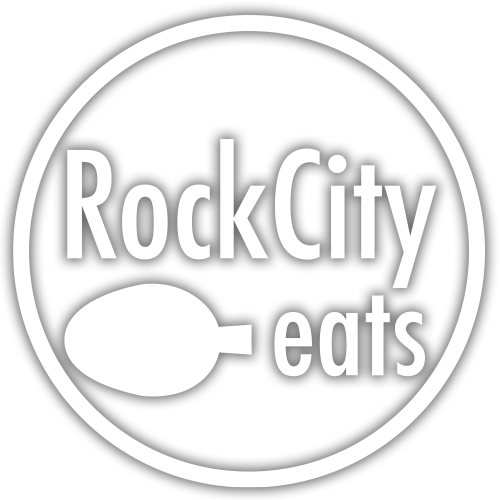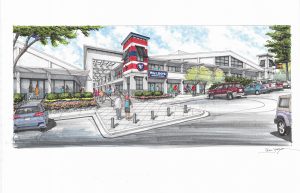When the coronavirus hit earlier this month, restaurants were faced with rapidly declining sales and forced to quickly decide if they were going to stay open or not. As a result, over the last two weeks, we have had roughly 25-35% of the locally-owned restaurants in Little Rock make the decision to temporarily, or in some cases likely permanently, close the doors.
Of those remaining many are operating with dramatically reduced hours, menus, and staff. The majority of the restaurants we have visited with privately are operating at a loss just to continue to pay employees something to be as helpful as possible to their staff.
A lot of those decisions will change dramatically this week and next as the provisions within the CARES act, the national coronavirus stimulus bill, rolls out. The big two provisions that will impact restaurants being the increased unemployment payment rates and the Payroll Protection Program (PPP). How restaurants decide to utilize each will change the entire local food landscape for the next several months, and possibly have long-lasting impacts.
A quick note, do not take anything we say here as official advice, legal or financial. We take no liabilities for any decisions made. We are simply reading, researching, talking to experts and restaurant owners, and then trying to give our best opinion at what is to come.
The changes to the unemployment payments will likely have the largest impact, especially for restaurants who remained open as a service to the employees. Under the act it adds up to an additional $600 in federal money per week to help fill in the gap between state unemployment payments and what the worker’s actual salary was. Currently, the state pays around 50% of the worker’s salary, up to $451 per week. This, before the act, means that a restaurant worker who had their hours reduced by 50% or less is essentially better off staying employed.
Now under the new provision, any worker who has seen reduced hours that makes under around $50,000 a year is better off taking unemployment, and the restaurants that employ them are doing right by the employee by laying them off to do it. No worker will get more money than they were making previously before seeing hour reductions, but they will get their full wages back. This is the best decision for restaurants that were operating at a loss due to labor cost and can weather a few months of being closed. It will mean a number of restaurants close down based on the decision.
There is also a scenario where skilled owners could let all the staff, or the vast majority, go and operate the restaurant themselves or with limited staff and make just enough money to cover the bills if they were unable to negotiate lease and utility deferrals or cover it themselves.
The reality is that this will be a large number of restaurants that fall into this category. I think you will see a high number of restaurants make the decision over the next week or two to close the doors and wait the pandemic out. We are already seeing places like Loca Luna/Red Door, Speakeasy in Bryant, and others make the call based on this portion of the bill.
The other scenario is much more complicated but could see a handful of restaurants decide to reopen or make the decision to remain open during the crisis. In fact, those select few who fall into this category could dramatically benefit from this scenario and see growth during this period with a combination of reduced competition and overhead expenses.
The Payroll Protection Program, PPP for short, allows for low-interest loans for businesses. Even better, the majority of the loan can be forgiven for businesses that retain their staff at the same employment rates as before through July. Our friends over at CFO Network have a great breakdown of this program.
The VAST majority of restaurants cannot handle that type of gamble during this time period. It is too big of a risk-taking the money in exchange for keeping staff at an uncertain time. Our friend Jeff Hodges of Foghorns in NWA did the math for his own restaurants and realized that the way the employment portion is written, his large restaurant would add an additional debt by taking it if they tried to keep people employed, and would incur large debt based on his operating cost if he somehow failed to do it. His restaurant and his employees benefit the most in the long run by laying them off, allowing them to replace their full salary with unemployment, and then hiring them back when the crisis is over.
For a select few though, it is a brilliant move. Small restaurants that are family owned and operated with a low number of workers could take the loan, pay everyone as normal, and have it all forgiven. The forgivable portions of the loan include areas like rent, utilities, payroll, operating cost, and even repayment of other debts. So essentially a small restaurant could take the money to cover their entire operating cost, have it all forgiven, and bank the profits at the end of this.
Even better a case could be made for making small operational upgrades to the restaurant such as having a website with online ordering built, or making some facility improvements, by directing profits toward the business upgrades without having the risk of needing to utilize profits during this time for operating costs. So a small restaurant could come out of the coronavirus period in a position for larger growth and higher profits than they were at going into it.
This will inevitably cause certain restaurants to make the decision to stay open. Even better it will allow some small restaurants that operated on a small budget to decide to actually reopen. It is something our close friends at Heirloom in Rogers are currently weighing. Owner and chef Jason Paul and his wife operate the small 30ish seat restaurant with a limited staff. Plus, because of the limited hours of the restaurant, the few staff he does hire are likely considered part-time to begin with. Heirloom closed toward the beginning of this virus due to their sit down pre-fixe menu style, but with the changes, he could essentially pay himself and his wife, fulfill all of their debt obligations, and pay whatever staff he needed. If he wanted to serve food, which he completely would not have to, he could adjust the menu for carryout or delivery items and us the profit for enhancements, or save it as a rainy day fund for the future.
I am in no way saying this is the direction Heirloom, or other small family-operated restaurants will go, but a strong case could be made for that decision.
Almost every locally owned restaurant has a large decision to make in the coming days based on the two critical components of the CARES act in relation to their individual scenarios. Expect to see a large number of restaurants decide to lock the door and wait it out. At the same time expect to see a few of our favorite little mom and pop shops realize the potential and take advantage of the situation. Finally, expect several restaurants who are sitting somewhere in between continue to operate as normal and possibly benefit from decreased restaurant choices, but only if they begin implementing strong marketing policies to continue to reach out to customers and bring them in.
Of those remaining many are operating with dramatically reduced hours, menus, and staff. The majority of the restaurants we have visited with privately are operating at a loss just to continue to pay employees something to be as helpful as possible to their staff.
A lot of those decisions will change dramatically this week and next as the provisions within the CARES act, the national coronavirus stimulus bill, rolls out. The big two provisions that will impact restaurants being the increased unemployment payment rates and the Payroll Protection Program (PPP). How restaurants decide to utilize each will change the entire local food landscape for the next several months, and possibly have long-lasting impacts.
A quick note, do not take anything we say here as official advice, legal or financial. We take no liabilities for any decisions made. We are simply reading, researching, talking to experts and restaurant owners, and then trying to give our best opinion at what is to come.
The changes to the unemployment payments will likely have the largest impact, especially for restaurants who remained open as a service to the employees. Under the act it adds up to an additional $600 in federal money per week to help fill in the gap between state unemployment payments and what the worker’s actual salary was. Currently, the state pays around 50% of the worker’s salary, up to $451 per week. This, before the act, means that a restaurant worker who had their hours reduced by 50% or less is essentially better off staying employed.
Now under the new provision, any worker who has seen reduced hours that makes under around $50,000 a year is better off taking unemployment, and the restaurants that employ them are doing right by the employee by laying them off to do it. No worker will get more money than they were making previously before seeing hour reductions, but they will get their full wages back. This is the best decision for restaurants that were operating at a loss due to labor cost and can weather a few months of being closed. It will mean a number of restaurants close down based on the decision.
There is also a scenario where skilled owners could let all the staff, or the vast majority, go and operate the restaurant themselves or with limited staff and make just enough money to cover the bills if they were unable to negotiate lease and utility deferrals or cover it themselves.
The reality is that this will be a large number of restaurants that fall into this category. I think you will see a high number of restaurants make the decision over the next week or two to close the doors and wait the pandemic out. We are already seeing places like Loca Luna/Red Door, Speakeasy in Bryant, and others make the call based on this portion of the bill.
The other scenario is much more complicated but could see a handful of restaurants decide to reopen or make the decision to remain open during the crisis. In fact, those select few who fall into this category could dramatically benefit from this scenario and see growth during this period with a combination of reduced competition and overhead expenses.
The Payroll Protection Program, PPP for short, allows for low-interest loans for businesses. Even better, the majority of the loan can be forgiven for businesses that retain their staff at the same employment rates as before through July. Our friends over at CFO Network have a great breakdown of this program.
The VAST majority of restaurants cannot handle that type of gamble during this time period. It is too big of a risk-taking the money in exchange for keeping staff at an uncertain time. Our friend Jeff Hodges of Foghorns in NWA did the math for his own restaurants and realized that the way the employment portion is written, his large restaurant would add an additional debt by taking it if they tried to keep people employed, and would incur large debt based on his operating cost if he somehow failed to do it. His restaurant and his employees benefit the most in the long run by laying them off, allowing them to replace their full salary with unemployment, and then hiring them back when the crisis is over.
For a select few though, it is a brilliant move. Small restaurants that are family owned and operated with a low number of workers could take the loan, pay everyone as normal, and have it all forgiven. The forgivable portions of the loan include areas like rent, utilities, payroll, operating cost, and even repayment of other debts. So essentially a small restaurant could take the money to cover their entire operating cost, have it all forgiven, and bank the profits at the end of this.
Even better a case could be made for making small operational upgrades to the restaurant such as having a website with online ordering built, or making some facility improvements, by directing profits toward the business upgrades without having the risk of needing to utilize profits during this time for operating costs. So a small restaurant could come out of the coronavirus period in a position for larger growth and higher profits than they were at going into it.
This will inevitably cause certain restaurants to make the decision to stay open. Even better it will allow some small restaurants that operated on a small budget to decide to actually reopen. It is something our close friends at Heirloom in Rogers are currently weighing. Owner and chef Jason Paul and his wife operate the small 30ish seat restaurant with a limited staff. Plus, because of the limited hours of the restaurant, the few staff he does hire are likely considered part-time to begin with. Heirloom closed toward the beginning of this virus due to their sit down pre-fixe menu style, but with the changes, he could essentially pay himself and his wife, fulfill all of their debt obligations, and pay whatever staff he needed. If he wanted to serve food, which he completely would not have to, he could adjust the menu for carryout or delivery items and us the profit for enhancements, or save it as a rainy day fund for the future.
I am in no way saying this is the direction Heirloom, or other small family-operated restaurants will go, but a strong case could be made for that decision.
Almost every locally owned restaurant has a large decision to make in the coming days based on the two critical components of the CARES act in relation to their individual scenarios. Expect to see a large number of restaurants decide to lock the door and wait it out. At the same time expect to see a few of our favorite little mom and pop shops realize the potential and take advantage of the situation. Finally, expect several restaurants who are sitting somewhere in between continue to operate as normal and possibly benefit from decreased restaurant choices, but only if they begin implementing strong marketing policies to continue to reach out to customers and bring them in.





